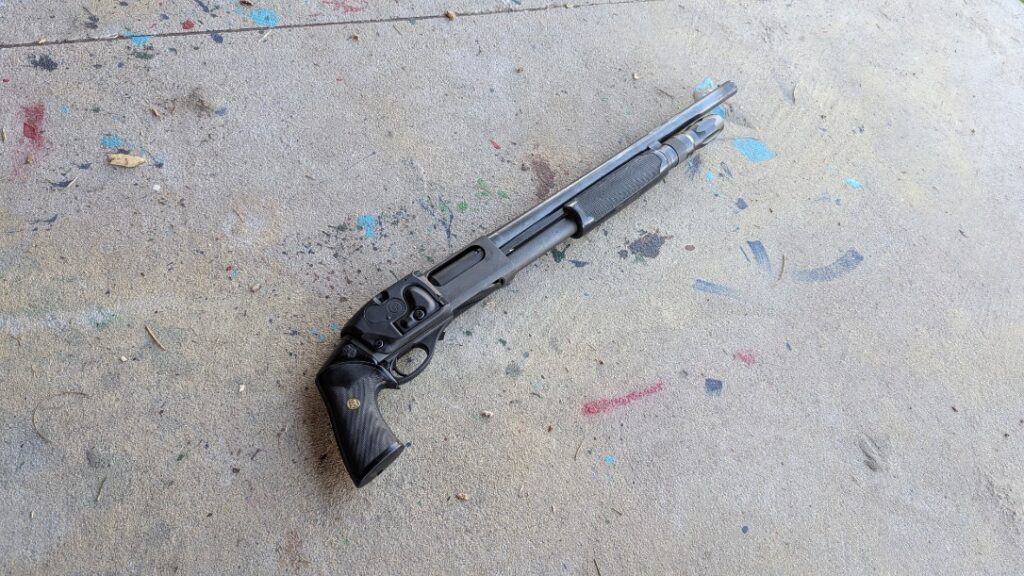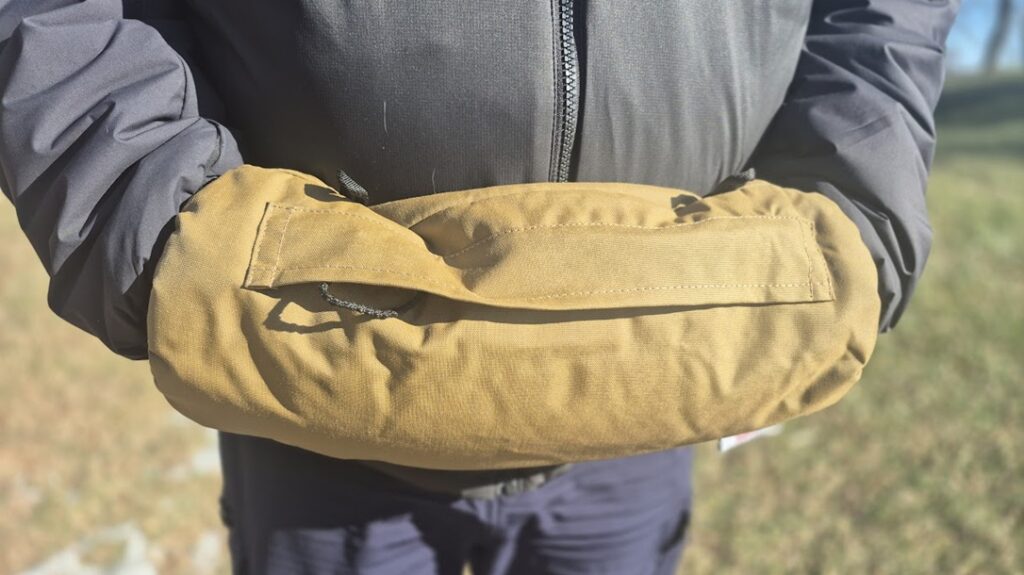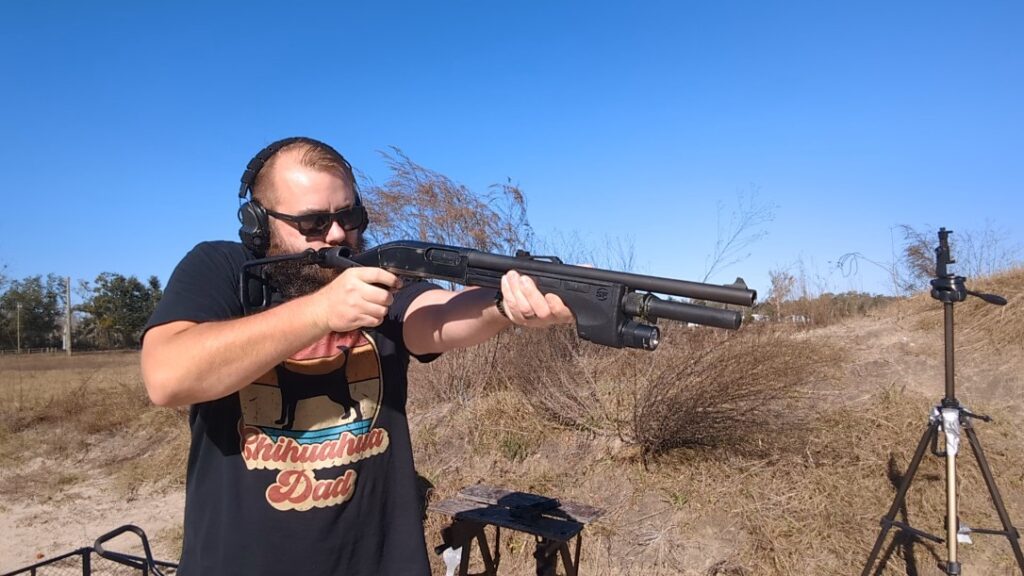Cover Photo: A professional picture of XS Sights new Glock Fiber Optic Sight Set. While it’s not my picture, it’s a perfect close-up of the fiber optic rod, which is central to this post.
One of the coolest things about fiber optic handgun sights [besides the way they catch and transmit light] is their fantastic sight pictures. Typically, these sight pictures consist of a front sight with a fiber optic rod and a plain black or serrated rear sight with a fairly wide notch that’s easy to look through quickly for straightforward sight alignment. With these sights and their sight pictures, shooters can still take advantage of their ‘brilliant’ nature to make quick and target-focused shots like they would with a regular red-dot sight.
For this reason, I’ve thought of and also shot with fiber optic iron sights as “pseudo-red-dots” for some time. Described in the simplest terms possible, fiber optic rods are nothing more than strands of specialized plastics with a special coating that traps light and reflects it lengthwise throughout the strand.
Advertisement — Continue Reading Below
Fiber optics are extremely sensitive to light and work in virtually all lighting conditions with visible light without relying on another source of energy.
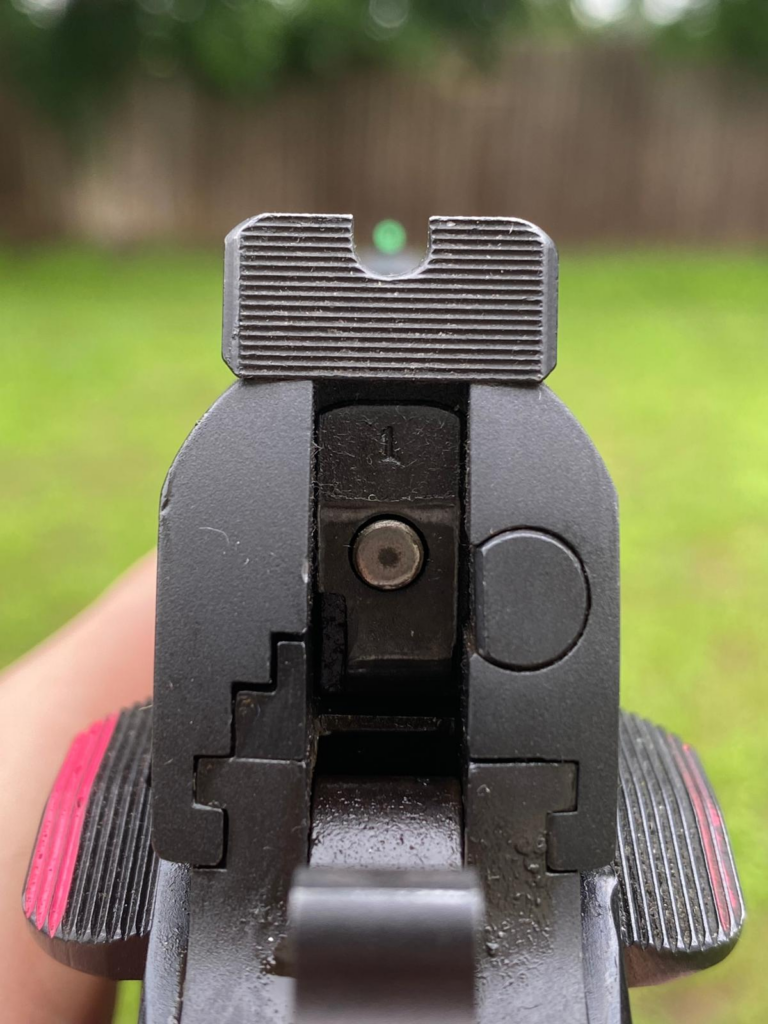
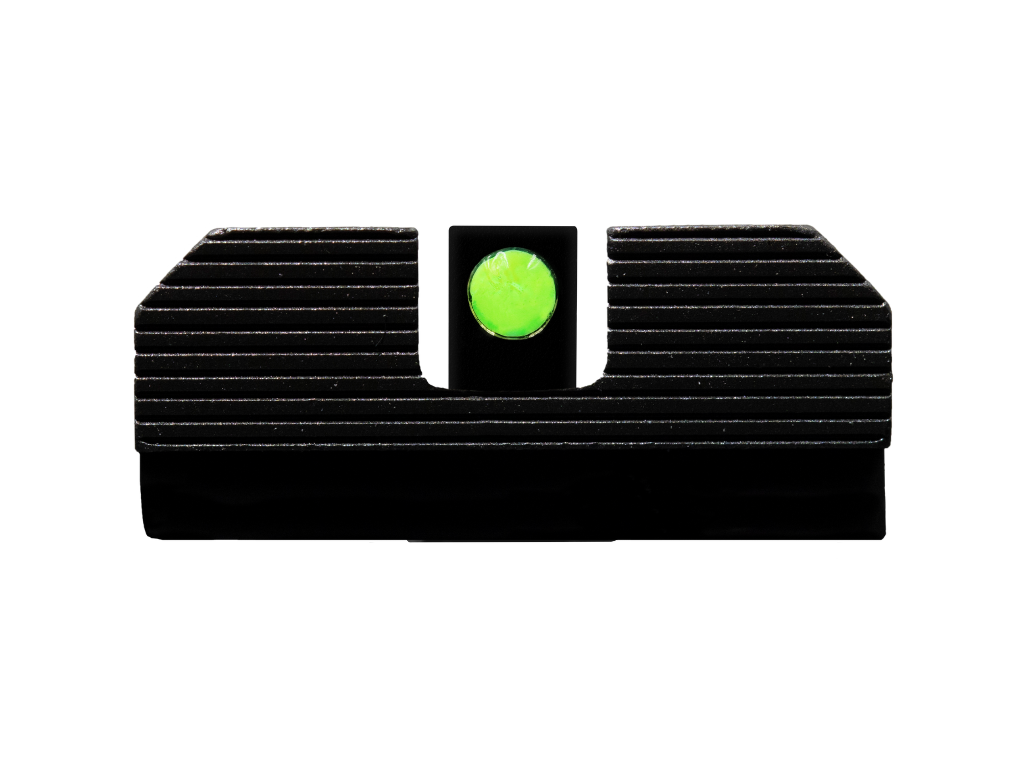
Advertisement — Continue Reading Below
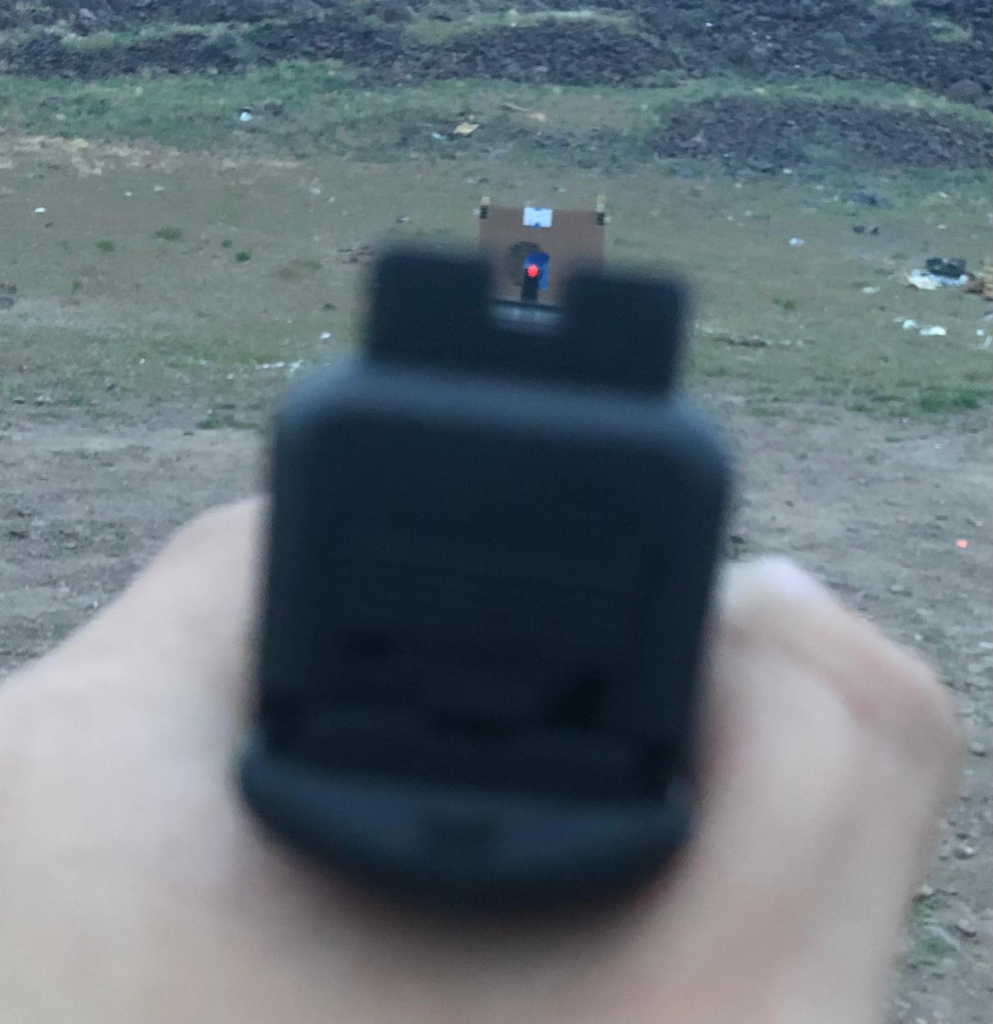
Target Focused Shooting
Target-focused shooting involves the shooter focusing their vision keenly on their target and shooting when the sight(s) of their firearm intersect the line of sight between the shooter’s eyes and the target. Likewise, target-focused shooting is generally done with both eyes open which makes it no different than playing any other sport that requires eye and hand coordination.
Since the eyes only need to focus on the target ahead, it can lead to faster shots than sight-focused shooting. This is because the eyes and brain do not require extra time to process the alignment between the actual target and the firearm’s sights. Target-focused shooting isn’t exclusive to handguns only, and in certain shooting sports, it’s the only way to shoot properly.
Advertisement — Continue Reading Below
Shooting Clay
Consider shotgun sports, for example. These games revolve around fast-moving clay targets and would be a great example. In order to hit a moving aerial target with a shotgun, the shooter has no choice but to track the “bird” by looking at it directly as it moves in flight. Failing to do so is one of the most common ways to miss with shotguns because shooters will erroneously focus on their shotgun’s bead instead of keeping an eye on the moving clay pigeon.
By the time they find the ‘perfect’ shotgun sight picture and pull the trigger, the clay will have already moved to a different point in its flight path. Anyone who can grasp wing shooting can easily translate it to target-focused handgun shooting as well. With regard to shooting with red dots, target-focused shooting is mandatory.
A red-dot shooter is ideally focused on the target as if they were getting ready to bore through it with imaginary laser-vision and will fire when their bright red dot crosses their vision. The neat thing is that this exact technique can also be done with a fiber optic sight.
Advertisement — Continue Reading Below
Using Fiber Optics As Pseudo Dots
By combining the principles of hard target focus and the light gathering/transmission abilities of fiber optics, shooters can also shoot nearly as effectively as they could with red-dot sights. The key that brings it all together is the glowing nature of the fiber optic and how easily their brightness “grabs” the eye.
In fairness, shooting this way isn’t limited only to fiber optic sights either. A shooter could also shoot this way with any other brightly contrasting front sight. However, fiber optics tend to offer the best combination of utility, speed, and precision.
The pseudo-dot method isn’t without its drawbacks either. First, in order for this to work properly, the fiber optic front sight must still be in alignment with the rear-sight notch. This entails two points in addition to the target lining up compared to the red dot, which only consists of one point lining up in relation to the target.
Advertisement — Continue Reading Below
Second, when critical precision matters, such as trying to nail a tighter group at a smaller and more distant target, I find that one is better off using old-school sight-focused techniques for precision. This is really one of the areas where dots make a stark difference.
It’s also worth mentioning that fiber optic sights are considered semi-expendable and it’s not uncommon for them to get loose or inadvertently disappear. Fortunately that doesn’t prevent one from shooting with their pistol, but they lose the “brightness.” It’s always a good idea to keep spare rods on-hand.
The Takeaway
This Isn’t About Fiber Optics Versus Red-Dots, But…
Enough people in the shooting space have already written much about the pros and cons of shooting with modern slide-mounted red-dot sights. So, it’s pointless to repeat that here. However, it’s worth pointing out that the typical set of fiber optic pistol sights retails for less than $100. No one would disagree that shooting with a handgun equipped with an electronic red dot involves a higher cost.
Advertisement — Continue Reading Below
It’s not just because the sights themselves cost between $200 to $600 retail. But there are also the optics mounting plates or the extra smithing work needed to directly mill a mounting surface on a handgun’s slide (and the taller back-up iron sights if/when applicable). Regardless, there is much that can be done with a simple pair of fiber optic sights, and it revolves around the concept of target-focused shooting.
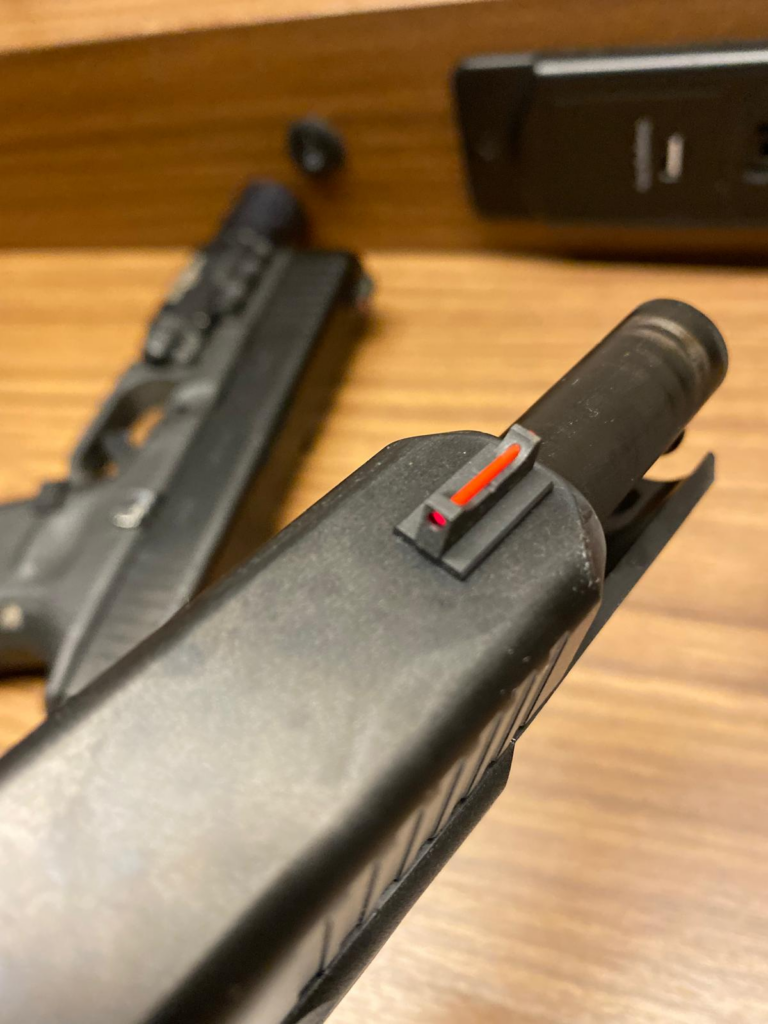
Although many handgun shooters now live in a “dot-world,” in the realm of iron sights, fiber optic sights have now become the go-to analogs. They seem to be more popular than ever before, to the point where I’ve noticed they’re standard on many factory handguns today compared to even a decade ago.
Advertisement — Continue Reading Below
Other Options
I may be biased, but I think their increase in popularity is a good thing. For general-purpose shooting, a set of sights like XS Sights’ new Glock set (or F/O sights in general) can offer a great deal of “shoot-ability” and flexibility to most shooters.
Such sights can be used exactly the same as any other traditional iron sight– with the ability to focus on the front sight itself and use its top edge as the visual reference. But more importantly, a shooter can also exploit the inherent benefits of fiber optics to shoot and transition between targets very quickly by using the front sight as a pseudo-red dot.


